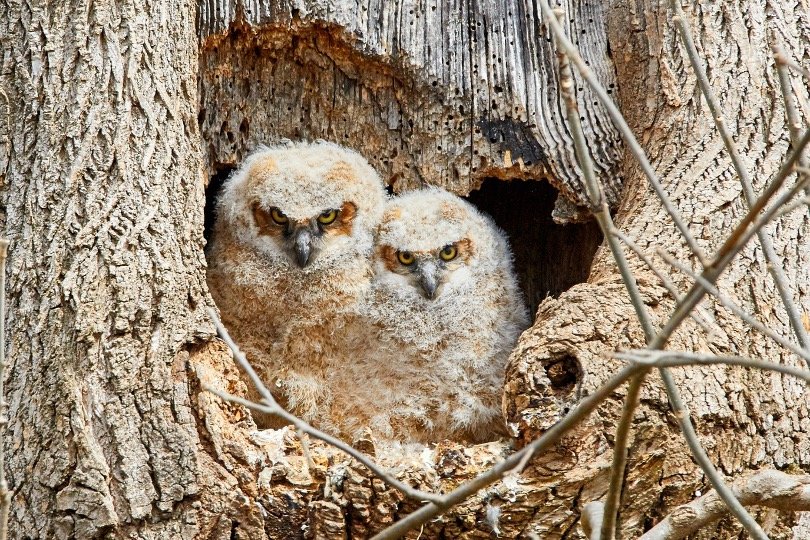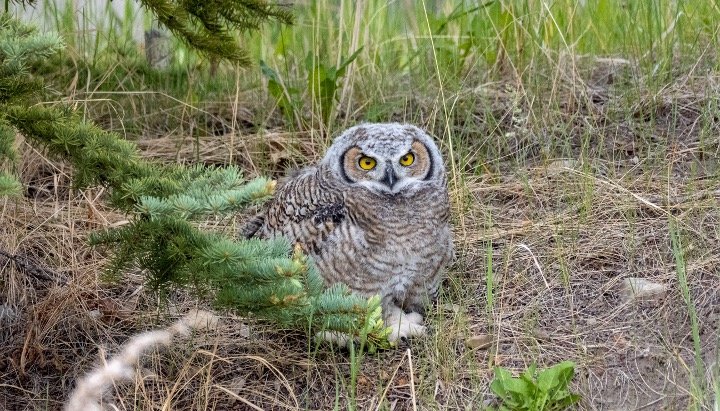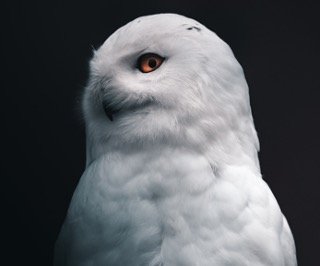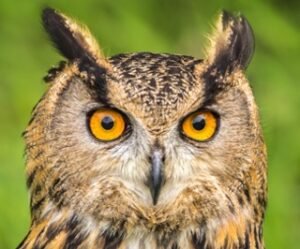
Owlet Life Cycles
An owlet is a tiny baby owl that has not yet gained its full adult plumage and it is still reliant on its parents for nourishment, care, and security.
Owlets do not normally leave the nest for long since they are unable to care for themselves entirely, but as they grow bigger, they will investigate the area around the nesting spot and may even be discovered on the ground.
The correct pronunciation is OW-leht. It has the same rhyming pattern as towelette, “howl let,” and “cowl bit.”
About Owlets
Owlets, like other newborn birds, are unique from mature, adult birds. These young birds have a lot of soft, fluffy down and no obvious markings, but their face discs are one of the earliest plumage traits to emerge.
The form, size, and color of the disc can be quite helpful in identifying an owlet. Although some juvenile birds have somewhat different color than older birds, eye and beak color can also be used to distinguish newborn owls.
Owlets may have small fluffy nubs on their heads in owl species with ear tufts, but they lack the full form, color, and dexterity that mature owls have with their ear tufts.
Wings can grow early in owlets, and the juvenile birds’ first flying feathers may have barring or other patterns when their bodies are still coated with undifferentiated down.
What Exactly Are Flight Feathers in Owlets?
Flight feathers are a bird’s lengthy, stiff wing and tail feathers that enables it to lift off and maneuver while in flight. Wing flying feathers are referred to as remiges, whereas tail flight feathers are referred to as rectrices.

Baby owls are usually unable to fly, although they may have left the nest to develop their wings and legs by investigating surrounding branches or rocks, climbing or bouncing about, a process known as “branching.”
They may perch in strange places or even rest straight on the ground, oblivious to the fact that they are in plain view of predators. They may be intrigued about adjacent items, even other animals, and may attentively explore their new world, moving their heads around seeing issues from various angles.
Young owls frequently congregate with their siblings, and it is not uncommon to observe many owlets together. Varied owls have varying juvenile phases and progress through the owlet stage at different speeds.
Owls in Ohio (10 Species with Pictures)
Smaller young owls mature faster and might even be undetectable from adult birds within the next few weeks after hatching. Larger owl species, on the other hand, may take many months to grow out of the owlet stage and acquire total independence.
Long term health, food availability, environment, and stress can all have an impact on how rapidly a young owl grows.
What to Do If You See Baby Owl or Owlet?
Mature adult owls may be very protective of their young and have been reported to fight other birds, big creatures, and even humans if they sense a threat. Birders must always be attentive and preserve their distance when viewing owlets to prevent stressing the young birds or antagonizing their parents.
If a juvenile owl looks to be in trouble or is injured, it is recommended to seek help from a professional wildlife rehabilitator, bird rescue group, or other wildlife authorities to ensure the bird’s safety and health.
Birders should not attempt to capture or rescue a young owl on their own since inappropriate handling might lead to more complications or damage.
Furthermore, juvenile owls may be untrained and immature, but their claws and beak are still sharp and strong, and even young owls may cause significant damage when scared or frightened.
Children and dogs must also be maintained a strategic distance from newborn owls to reduce stress and the possibility of owl or observer injury.

Mature Owlets
The word owlet is also used to describe two dozen tiny owl species and numerous of its subspecies, including the spotted owlet, chestnut owlet, Javan owlet, forest owlet, and long-whiskered owlet.
When the phrase is part of a species name, it refers to both matured and juvenile birds, but the generic term owlet refers to all juvenile owls of any species. The word is also used by the owlet-nightjar family, despite the fact that they are Aegothelidae birds and not real owls of the Strigidae (typical owl) or Tytonidae (barn owl) families.
Owlet-nightjars are far more directly connected to nightjars, frogmouths, and nighthawks than to owls, therefore the word owlet is solely descriptive for these species.
These birds have extensively camouflaged plumage, huge eyes, and many have vague or unfinished facial discs, although they are not owls, and their young are not termed owlets.








